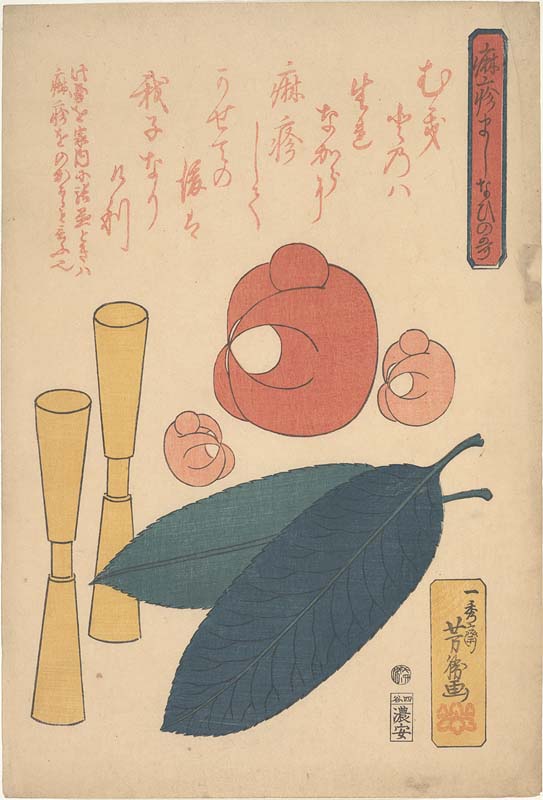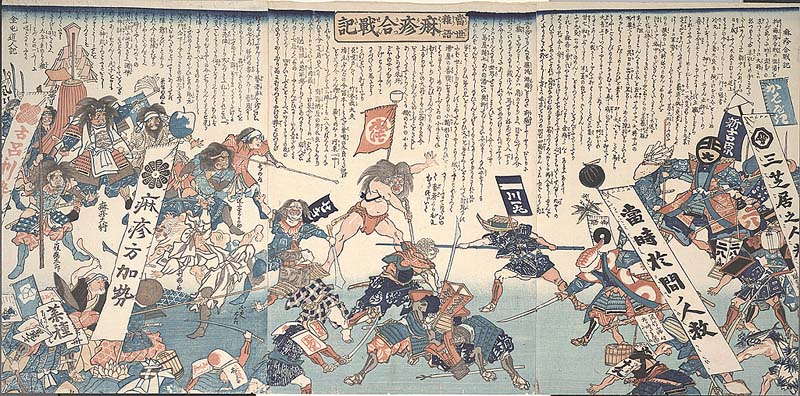In recent weeks measles again became one of the main topics covered in the news stories. Not that long ago, before the advent of the vaccines, measles epidemics were a common occurrence around the globe. Back in the nineteenth century numerous hashika-e (measles pictures) from the UCSF Japanese Woodblock print collection served as guides to combat this disease. Many of them include a holly leaf (tarayō) believed to contain protective powers as well as recommendations for auspicious diet and and explanations how to persuade the measles kami (“Shinto term for god, divinity”*) to leave.
These charms when attached to a door or screen were supposed to protect the house and its inhabitants against measles:
Another print depicts three “mighty men” conquering measles.
And the battle to eradicate measles continues…
Please visit the UCSF archives digital collection to view the remaining prints related to contagious diseases and read about their meaning.
*Japanese popular prints: from votive slips to playing cards. Rebecca Salter, 2006.





